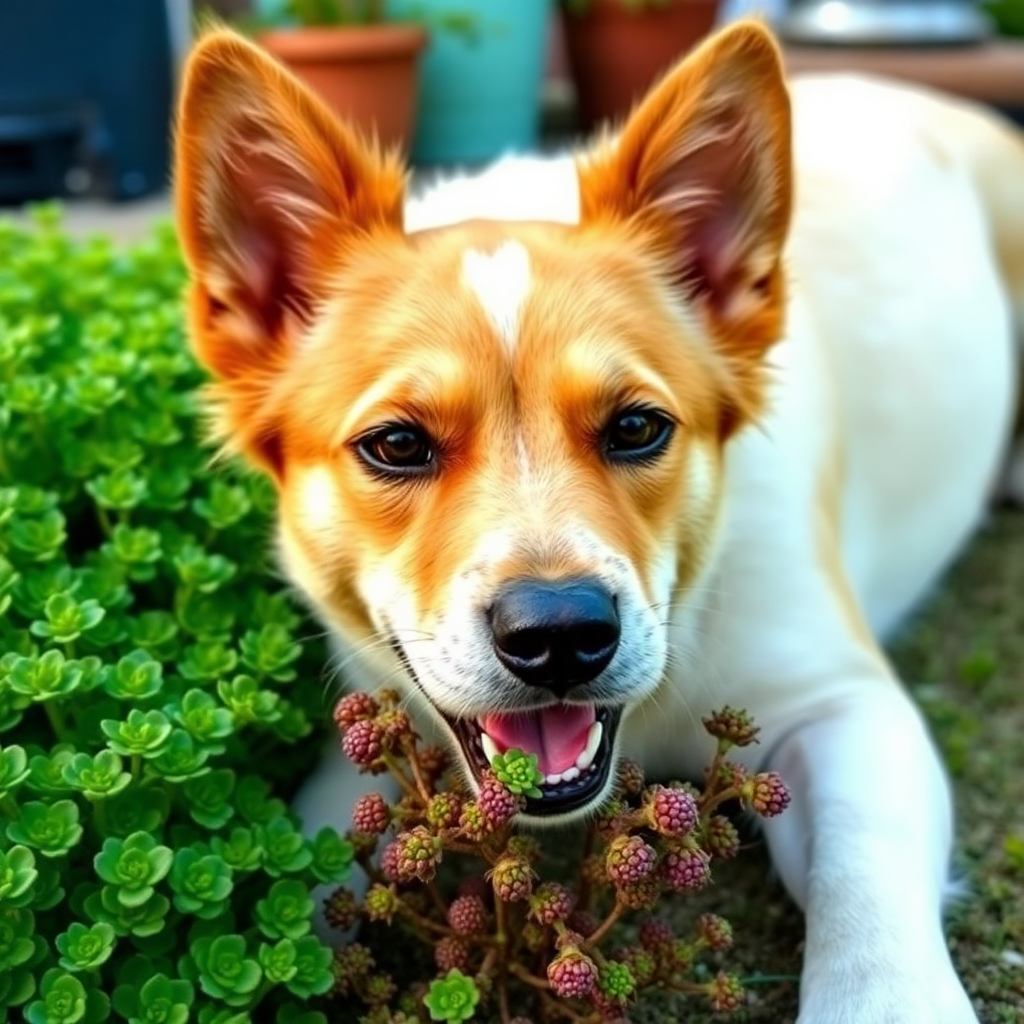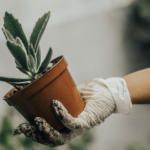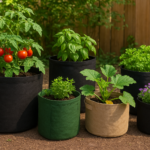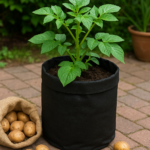As pet owners, we always worry about what our furry friends might nibble on. If you’re a dog owner who loves gardening, you may have wondered whether sedum plants are safe for dogs. Sedum, commonly known as stonecrop, is a popular succulent due to its low maintenance and vibrant appearance. But is it toxic to dogs? The good news is that sedum plants are generally considered non-toxic to dogs. However, there are still some things you should know before letting your pup roam freely around your sedum-filled garden.
What Are Sedum Plants?
Sedum is a large genus of succulent plants known for their thick, fleshy leaves and colorful flowers. These hardy plants are often used in rock gardens, green roofs, and ground cover because they require minimal care.
Sedum plants, also known as stonecrop, are a diverse group of succulents belonging to the Crassulaceae family. They are prized for their thick, fleshy leaves that store water, making them highly drought-tolerant. Sedums come in various shapes, sizes, and colors, ranging from low-growing ground covers to upright, bushy varieties. These hardy plants thrive in rock gardens, green roofs, and containers, requiring minimal care.
Sedums produce star-shaped flowers in shades of yellow, pink, red, and white, attracting pollinators like bees and butterflies. They prefer well-drained soil and full sun but can adapt to partial shade. Popular species include Sedum acre, Sedum spectabile, and Sedum spurium. Thanks to their resilience and visual appeal, sedums are a favorite among gardeners looking for easy-to-maintain, year-round greenery.
Are Sedum Plants Toxic to Dogs?

The American Society for the Prevention of Cruelty to Animals (ASPCA) does not list sedum as toxic to dogs. This means that if your dog happens to chew on a sedum plant, they are unlikely to suffer from severe poisoning. while sedum is not considered toxic, eating large amounts may cause mild digestive upset, such as vomiting, diarrhea, or drooling. Some dogs may also have sensitivities that lead to skin irritation or excessive licking.
To keep your dog safe, monitor their behavior around plants and provide safe alternatives like chew toys or dog-friendly plants. If your dog shows any unusual symptoms after eating sedum, consult a veterinarian for advice.
Can sedum cause allergic reactions in dogs?
Sedum plants are generally considered non-toxic to dogs, but allergic reactions are possible in rare cases. Some dogs may have sensitivities to certain plants, including sedum, which could cause mild skin irritation or gastrointestinal discomfort if ingested. Signs of an allergic reaction may include excessive licking, itching, redness, swelling, or digestive issues like vomiting and diarrhea.
While most dogs can safely be around sedum without any issues, pet owners should monitor their dogs for unusual behavior after contact with the plant. If symptoms of an allergic reaction appear, wash the affected area with water and consult a veterinarian for further advice. To prevent potential allergies, limit your dog’s access to unfamiliar plants and introduce new greenery gradually while observing their response.
Possible Side Effects of Ingesting Sedum

While sedum plants are non-toxic, excessive consumption may cause mild gastrointestinal upset in dogs. Symptoms could include:
- Vomiting
- Diarrhea
- Loss of appetite
- Drooling
Sedum plants are generally non-toxic to dogs, but eating large amounts may cause mild digestive issues. While most dogs will not have serious reactions, some possible side effects include:
1. Gastrointestinal Upset
Ingesting too much sedum can lead to mild stomach discomfort. Symptoms may include vomiting, diarrhea, or a temporary loss of appetite.
2. Drooling
Some dogs may experience increased salivation after chewing on sedum, especially if they are sensitive to new plants.
3. Lethargy
If a dog eats a significant amount, they might feel sluggish or tired due to minor digestive distress.
4. Mild Allergic Reactions
Although rare, some dogs may develop skin irritation or excessive licking if they come into contact with sedum sap.
5. Changes in Eating Habits
After consuming sedum, a dog may temporarily refuse food or show disinterest in eating.
These symptoms are usually mild and resolve on their own. However, if symptoms persist or worsen, it’s best to consult a veterinarian for further guidance.
What to Do If Your Dog Eats Sedum
If your dog nibbles on sedum, observe them for any signs of distress. In most cases, they will be fine. However, if they show symptoms like vomiting or diarrhea, ensure they stay hydrated and contact your veterinarian if symptoms persist.If your dog eats sedum, there’s usually no need to panic, as sedum plants are generally non-toxic. However, excessive consumption might cause mild digestive upset. Here’s what you should do:
1. Observe for Symptoms
Watch for signs like vomiting, diarrhea, drooling, or loss of appetite. Most dogs won’t experience severe reactions, but monitoring them for any unusual behavior is important.
2. Provide Water
Ensure your dog has access to fresh water to stay hydrated, especially if they show signs of mild stomach upset.
3. Limit Further Ingestion
Move your dog away from the plant and prevent further access. Consider fencing off your garden or training your dog to avoid plants.
4. Contact Your Veterinarian if Necessary
If symptoms persist for more than a few hours or worsen, consult your vet for advice. They can guide you on whether medical attention is needed.
5. Introduce Safe Chew Alternatives
Offer dog-friendly chew toys or treats to discourage plant-eating behavior.
How can I prevent my dog from eating garden plants like Sedum

Preventing your dog from eating garden plants like sedum requires a combination of training, barriers, and distractions. Here are some effective strategies:
- Training and Commands – Teach your dog basic commands like “leave it” or “no” to discourage them from chewing on plants. Positive reinforcement with treats and praise can help reinforce good behavior.
- Physical Barriers – Use fences, garden edging, or raised beds to keep plants out of reach. You can also place decorative rocks around sedum to make it less accessible.
- Safe Chew Alternatives – Provide chew toys or pet-safe plants like wheatgrass to redirect their chewing instincts.
- Natural Deterrents – Spraying plants with pet-safe deterrents, like diluted vinegar or citrus peels, can discourage chewing.
- Supervision and Distraction – Keep an eye on your dog outdoors and engage them with activities to prevent plant munching.
Safe Alternatives to Sedum in Dog-Friendly Gardens
If you’re looking for dog-friendly plants to replace or complement sedum in your garden, there are plenty of safe options. These plants are non-toxic to dogs and add beauty to your outdoor space.
- Marigolds – These bright flowers are safe for dogs and help repel pests naturally. They thrive in sunny spots and require minimal maintenance.
- Sunflowers – A cheerful addition to any garden, sunflowers are non-toxic and safe if your dog nibbles on them. They also attract pollinators like bees and butterflies.
- Basil – This fragrant herb is safe for dogs and can be grown in pots or garden beds. It’s a great choice for culinary use as well.
- Thyme – A low-growing, hardy herb that’s safe for pets and ideal for ground cover. It also adds a pleasant fragrance to your garden.
- Snapdragons – These colorful flowers are non-toxic to dogs and easy to grow in flower beds or containers.
Conclusion
Sedum plants are generally safe for dogs, making them a great addition to pet-friendly gardens. While they aren’t toxic, it’s always a good idea to monitor your dog if they consume any plant material.
FAQs
1. Can sedum cause allergic reactions in dogs?
While rare, some dogs may have sensitivities to certain plants, including sedum. Watch for skin irritation or excessive licking.
2. How can I prevent my dog from eating garden plants?
Training, fencing, and using pet-friendly deterrents can help keep your dog from munching on plants.
3. Are all succulents safe for dogs?
No, some succulents, like aloe vera and jade plants, are toxic to dogs. Always research before planting.
4. What should I do if my dog eats a large amount of sedum?
Monitor for signs of discomfort. If symptoms persist, contact your vet.
5. Can I grow sedum indoors if I have a dog?
Yes! Sedum can be grown indoors in pots, and it’s generally safe for dogs. Just keep an eye on their chewing habits.







